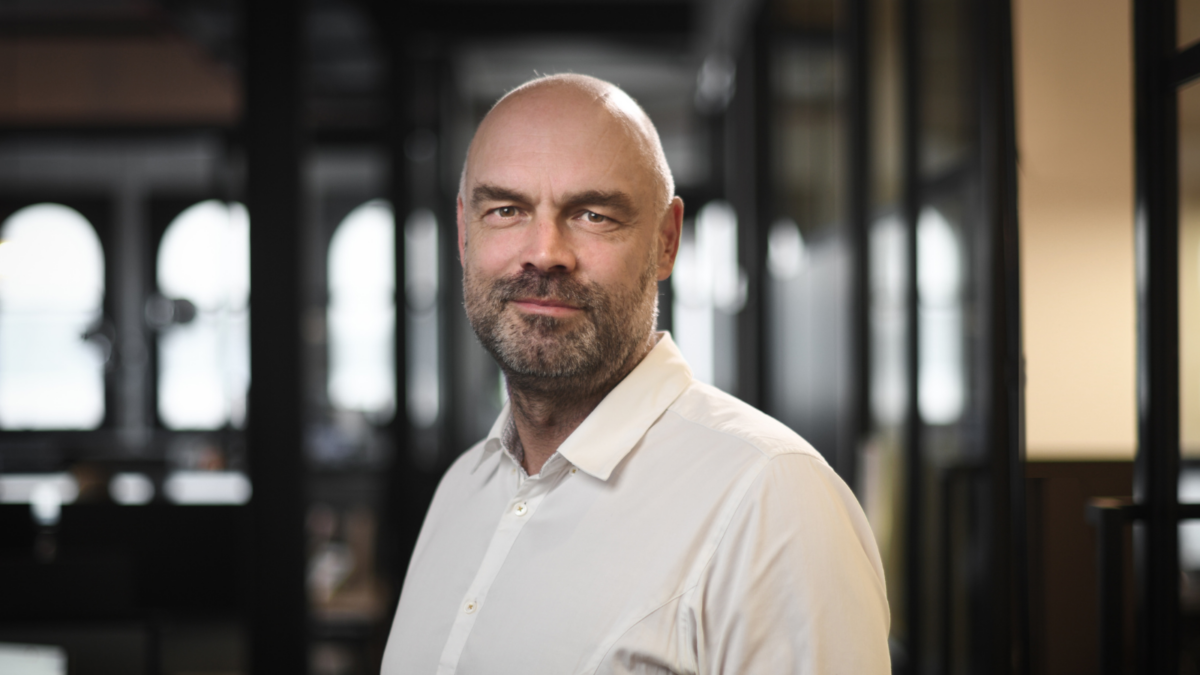How two hands and the ‘Grandma Principle’ created industry super’s most enduring symbol
The idea that industry funds should tell their story through multi-media helped them win their war with the retail funds, but it was largely up to two creative agencies to execute it: Shannon’s Way, run by veteran ad man Bill Shannon, and Chorus, to which it subcontracted for visual creative work.
One of the pivotal things the two agencies did together was the now-infamous “Vultures in the Trees” campaign of the early 2000s, which depicted retail super funds as just that.
“There was this idea that fees and commissions were eroding the savings of everyday Australians; it was implied, in a not-too-subtle way, that everybody who had their snout in the trough – or beak in the carcass – was benefiting, and that was aimed at retail funds,” says Chris Tucker (pictured), who was at the time a director of Chorus.
“My understanding, as a non-financial person, was that was exactly the case. And I think I had a financial adviser at the time in my late 20s and I couldn’t believe they had these shitty trailing commissions on everything that just weren’t transparent.”
The success of the Vultures in the Trees campaign led to more work for the industry funds, including a series of television commercials shot at industrial sites around Melbourne under the theme “What do you dream of?” with everyday Australians talking about what they hoped to achieve in their retirement to a backing track of Roy Orbison’s Dream Baby. But the campaign soon had new talent.
“He said, ‘I think we need to make the make into real hands’, and I said ‘that’s a shit idea’.”
“The great thing was, Bill came back from the meeting about the marketing campaign and said ‘We need somebody who’s got financial kudos to be the voice of financial reason… and it’s going to be the ex-Governor of the Reserve Bank. Bill Kelty has recommended that this ex-Governor, Bernie Fraser, is going to be the face and the voice.'”
“I went “Oh, great – what does he sound like?” And then there was this audible and substantial groan when we heard his voice,” Tucker recalls. “The tagline was “Super of the Future”.
“Bernie Fraser had this most torturous way of suggesting it, but we thought it was genius because it was so terrible and so bad – he’s not a slick salesperson. He’s not this person you could accuse of being a financial charlatan. The campaign went ahead, Bernie did this voiceover and became the face of industry super in its launch phase and for a good period after that because he was so believable.”
The industry funds as a collective were still at a nascent stage, and the plan was that they should be brought together under a “trust mark” like the Heart Foundation tick of approval. That mark was initially going to be placed alongside the funds themselves, but morphed into a signature element of all advertising thereafter.
There was no formal brief, Tucker says, other than that they needed to produce an identity and a mark that would become significantly recognisable and give people confidence about the fund that they were in. Tucker and Shannon didn’t see it as a “pivotal thing”.
“And then Bill Shannon said we should bring the industry super funds logo to life. And I remember going “Bill, this is great” – that was the initial pitch. And he said, “I think we need to make the make into real hands” and I said “that’s a shit idea” because on a symbol you don’t really want hands. You don’t want to be literal on a mark next to a fund logo. But then the idea of the hands obviously became more prominent in the whole expression of the idea of industry funds.”
“I can remember we presented super funds with three things – the diamond, the hands, and the ticks – and saying ‘that’s it’ and not realising back then how valuable simple ideas and simple connections can interpret and don’t need complexity around them, how important that actually is in terms of translation of memorable things.”
Tucker can still drive around Melbourne and see signs saying “look for the symbol”. A few years ago the industry funds considered “modernising” it, but Tucker says the symbol has so much cultural cachet and recognition that it doesn’t need to be reinvented.
“It was a pretty interesting example of successful, simple marketing, and kudos to Bill for always championing it,” Tucker says. “He could always see the fact that it worked… I call it the Grandma Principal. If I can get on the telephone to my grandmother and describe what the thing was and she can draw it then it works. The ISA logo – it’s a tick both ways, or two hands protecting something precious – a little chicken in there. If she can remember that and tell her next door neighbour, it’s worked.”
“Go back to ancient Egyptian hieroglyphics or pictograms. How they work, how they communicate – there’s a lot of meaning embedded into things and messages and we often overlook them and try and create new ones. But trying to create new things to embed into the consciousness of populations is actually a very hard task.”











